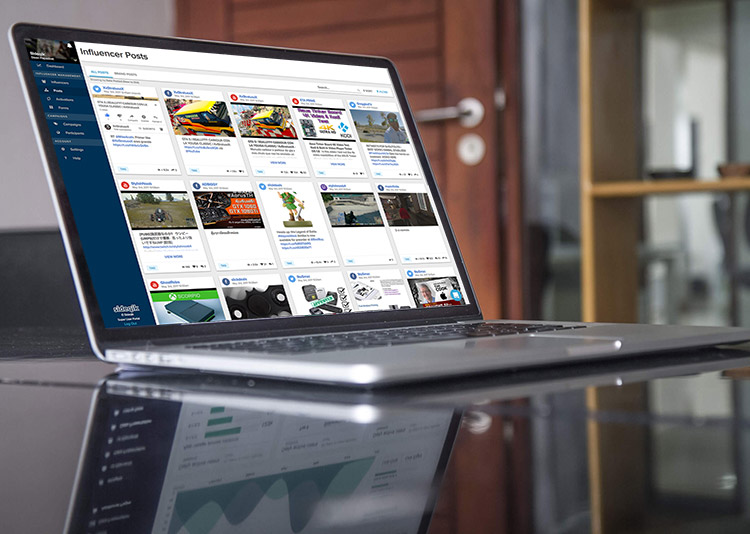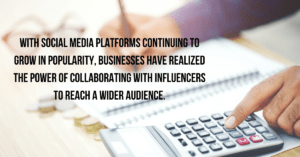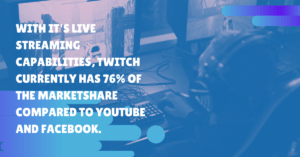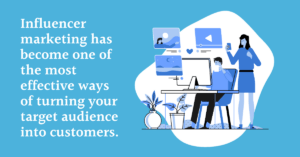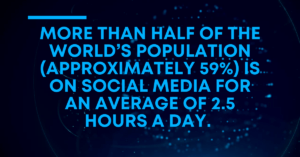Sideqik Director of Sales Rylan Albach has watched companies from all industries wade into influencer marketing. Below is a portion of his personal blog on how B2B businesses can use influencers just like consumer-facing companies. The blog has been edited for length and clarity.
B2B marketing has been pretty boring for a while. Everyone is active on social media, including VPs and decision makers, so why aren’t more businesses tapping into influencer marketing?
B2B influencer marketing can be a pretty intimidating market to get into. A lot of it has to do with perceived risk. Posting an image of some technology with features and specs and “educating the consumer” is a much more comfortable pitch for marketers and their bosses despite its lack of creativity.
The first B2B brands to use influencers in a compelling way will capture a huge portion of untapped ROI and potential revenue that small startups are stealing away from brands who won’t innovate upon their marketing strategies.
Having large Instagram and Twitter profiles push out content about your product makes sense. So how does a service provider or a B2B company use influencers to drive awareness, long-term sales, and ROI? Well, let me help you get brainstorming about how your brand can effectively implement influencer marketing into a B2B environment.
View this post on InstagramA post shared by Odelia Graff (@odeliagraff) on
Identifying Fans
The easiest way is to start by understanding your current following and brand advocates. People who already respect your brand are prime targets to collaborate with. Look through that audience and see what they’re talking about. Make sure they’re driving engagement around topics that matter to your business.
Understanding those influencer’s audiences is important too. They could be talking about topics your brand focuses on like IT, which is ideal, but their audience is comprised of males 18-25 (who knows, is there an @SexyITGal out there?). Unless things have changed, not a lot of VPs or decision makers are in that age range. Does that matter? That’s a decision you have to make. Maybe your brand wants to focus on going viral or making or a long-term play to ingrain your brand into the minds of future purchasers.
What about the influencer’s content? Make sure the content they create is on target and in-line with your brand’s cause and goals. Check that they have no profanity (unless you’re “hip” and “cool” I suppose), are professional, and consistently on target with their messaging on all platforms including any personal accounts that might be affiliated with the ambassador.
Searching through posts on all many platforms can take time, but it’s incredibly important. Slip-ups can be very costly and damaging to your brand, especially when they post something that could have been avoided easily with some diligence, so check those influencers thoroughly.
I Know a Few People That I’d Work With, So Now What?
Let’s say your company has a big hosted conference coming up. As a marketer, you should go to those top fans of your brand and talk to them about how much you appreciate their support. Maybe offer them a free ticket and accommodations to come and experience the conference and talk about it. From this, you’ll get a ton of content, awareness, and engagement with their audience that should be in-line with the content your brand looks to promote authentically. Additionally, you’re creating an experience with fans and clients that will never be forgotten — and that’s how you build brand loyalty.
https://www.instagram.com/p/BVQCr93hxgG/?hl=en&taken-by=intel
Want to make those big influencers and key opinion leaders who create a lot of content feel really special and talk about you? Buy their plane ticket, hotel arrangement, and watch that ROI soar as you create a true relationship and deep connection you can continue to leverage. In addition to that, let them create the content they think is organic and authentic. If it’s negative, you know how to improve and if it’s positive it doesn’t feel forced and fake.
Another idea is to produce content pieces with clients that to talk about their success. These pieces put the client —not your technology or company — in front of the spotlight. Give your client something they can share that’s hosted by you or references your brand. This way, they feel genuinely appreciated (as any client should) and will want to share that out within the company, across various platforms, and their network to drive exposure.
I’ve Pushed Content Out, What’s Next?
The fun part: measurement and optimization! Now that content is created, you can compare the earned media value of those posts and ROI numbers to understand what sort of value your program is driving to compare it to traditional ad spend.
A good idea is breaking out that value by influencer to understand which ones you should continue to engage or where your investments should be emphasized. Some may drive high value on Facebook but fail to create any value from YouTube reviews as their channel is growing. In that case, you can reallocate spend in further campaigns to perfect how you work with those influential people in your industry.
Whether it’s a client, a reporter, or just a YouTuber who has a deep knowledge of the industry, there are so many opportunities to get in front of your target audience in authentic ways. B2B brands are missing so much opportunity because of an inability to think outside of the box in how they can leverage and work with influencers.
For more of Rylan’s ramblings, head to Rylanalbach.com.
Nancy Rothman
Latest posts by Nancy Rothman (see all)
- How Travel Brands Can Use Influencer Marketing to Stay Afloat as the Pandemic Continues - February 22, 2022
- Influencer Marketing Trends to Watch (And Prepare For) in 2022 - December 31, 2021
- A Guide: How to Recruit the Right Influencers for Your Brand - December 30, 2021

